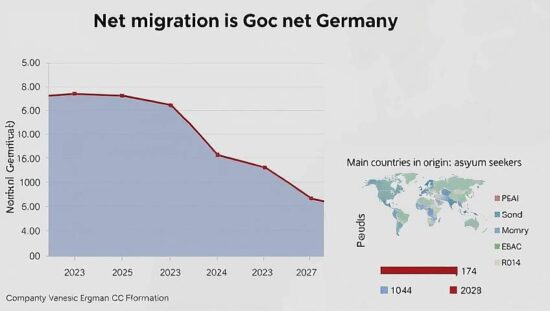Germany Sees a Decline in Net Migration in 2024
According to the Federal Statistical Office (Destatis), Germany’s net migration, which is the difference between the number of people moving to the country and those leaving, decreased by 12 percent in 2024 compared to the previous year. The net migration in 2024 was approximately 430,000, a significant drop from the 663,000 recorded in 2023.
The number of people moving to Germany decreased by 12 percent in 2024, with 1,694,000 people arriving and 1,264,000 leaving the country. In contrast, the number of people leaving Germany remained relatively stable, with a slight increase of 0.5 percent.
The decline in net migration is largely attributed to a decrease in the number of asylum seekers from Syria, Turkey and Afghanistan, with a 25, 53 and 32 percent drop, respectively. The number of asylum applications from these countries has also significantly decreased.
The net migration from Ukraine, however, remained unchanged at 121,000 people, with a slight decrease in the number of people moving to Ukraine and an increase in those leaving. The trend is expected to continue, with a net migration of around 20,000 people from Ukraine in the first four months of 2025, a significant drop from the 38,000 recorded in the same period of 2024.
Another factor contributing to the decline in net migration is a decrease in the number of people moving to Germany from the European Union, with a deficit of 34,000 people in 2024. This marks a significant change, as Germany had previously experienced a surplus of migrants from the EU, particularly from Poland, Romania and Bulgaria.
The decline in net migration from the EU is primarily due to a decrease in the number of people moving to Germany, with a 21, 8 and 18 percent drop in the number of people moving from Poland, Romania and Bulgaria, respectively. The number of people leaving these countries for Germany also increased, albeit slightly, in the case of Poland and Romania.
Within Germany, there were a total of 1,004,000 internal migrations in 2024, a 3 percent decrease from the previous year. Brandenburg, Bavaria and Schleswig-Holstein recorded the largest surpluses, while Berlin, Thuringia, Hesse and North Rhine-Westphalia experienced the largest deficits.





